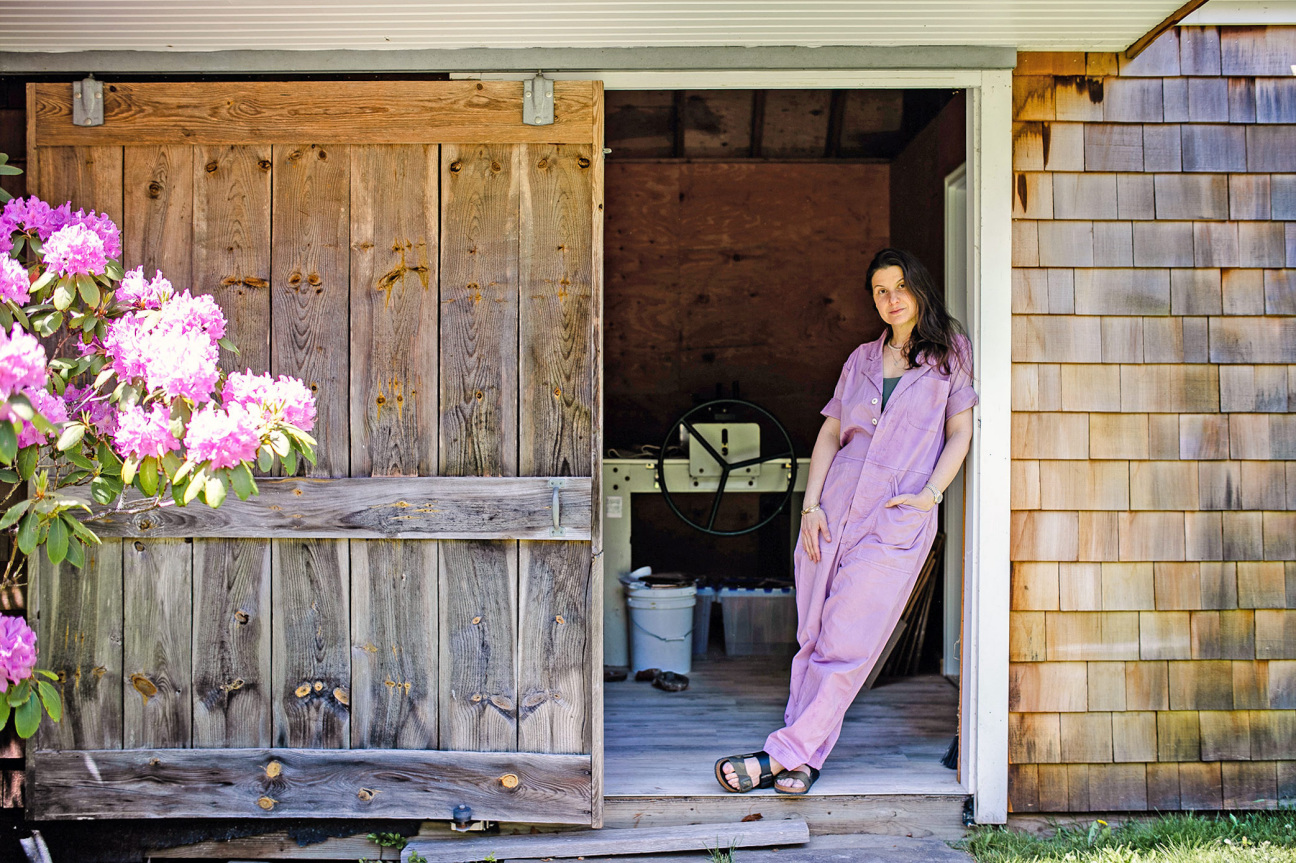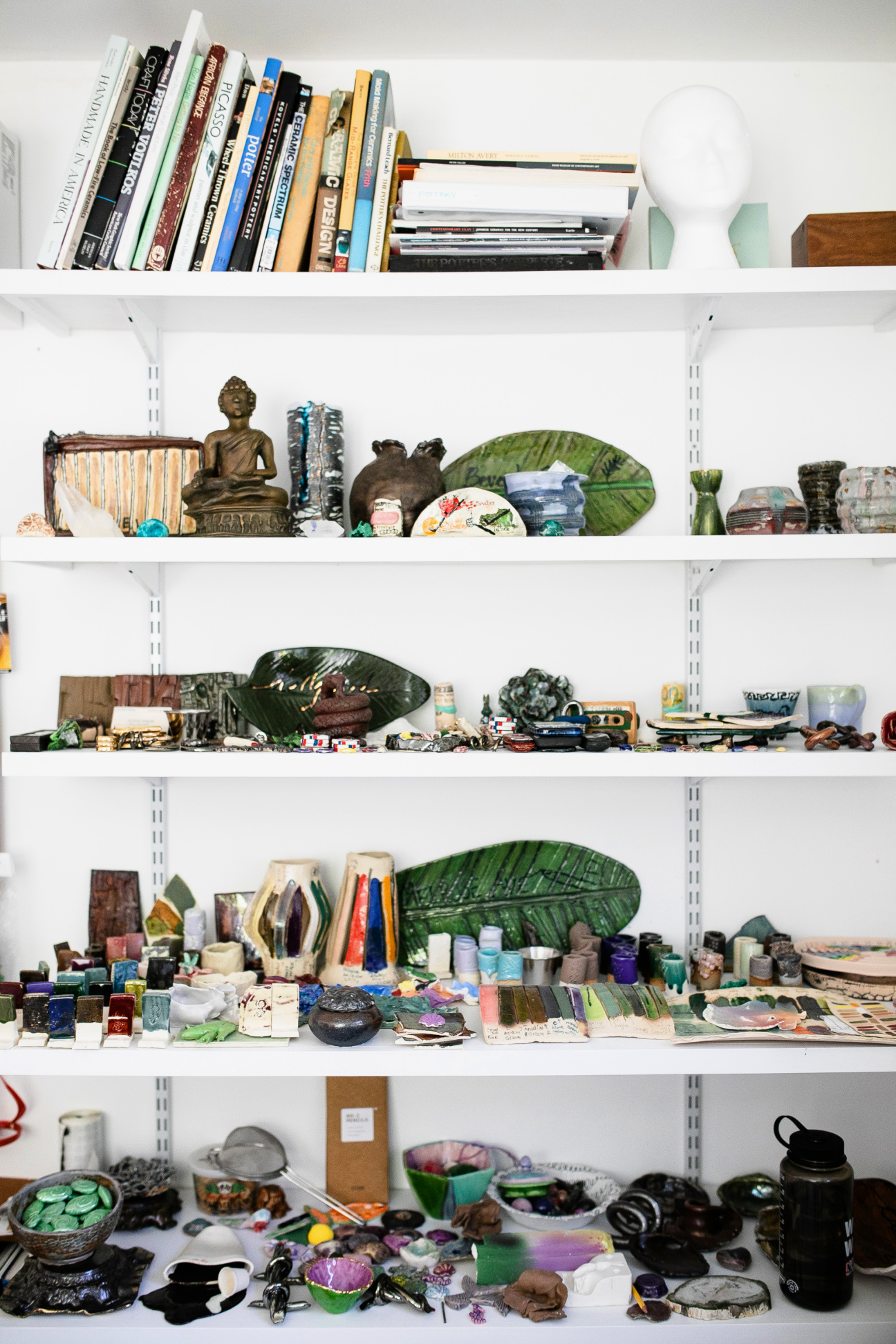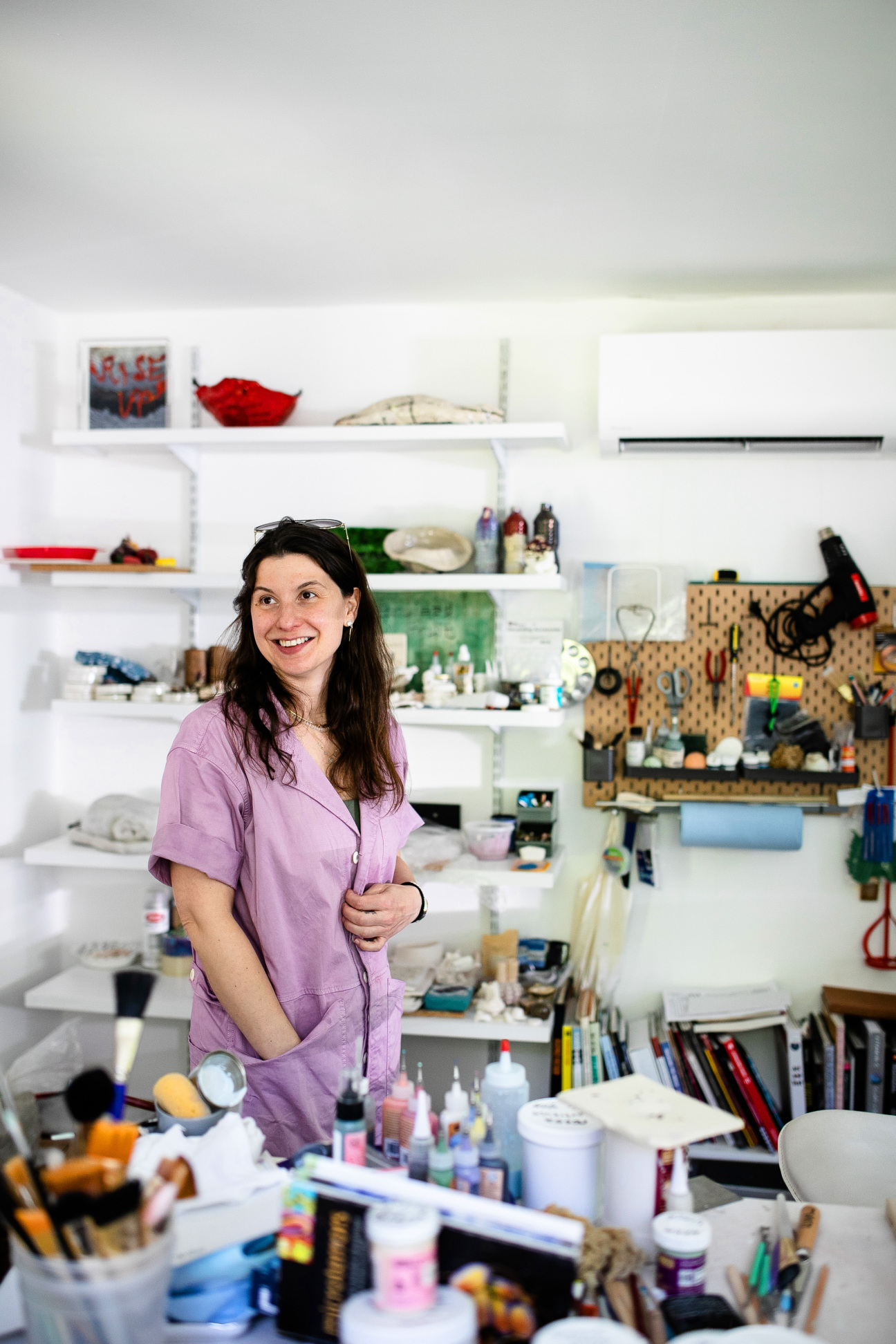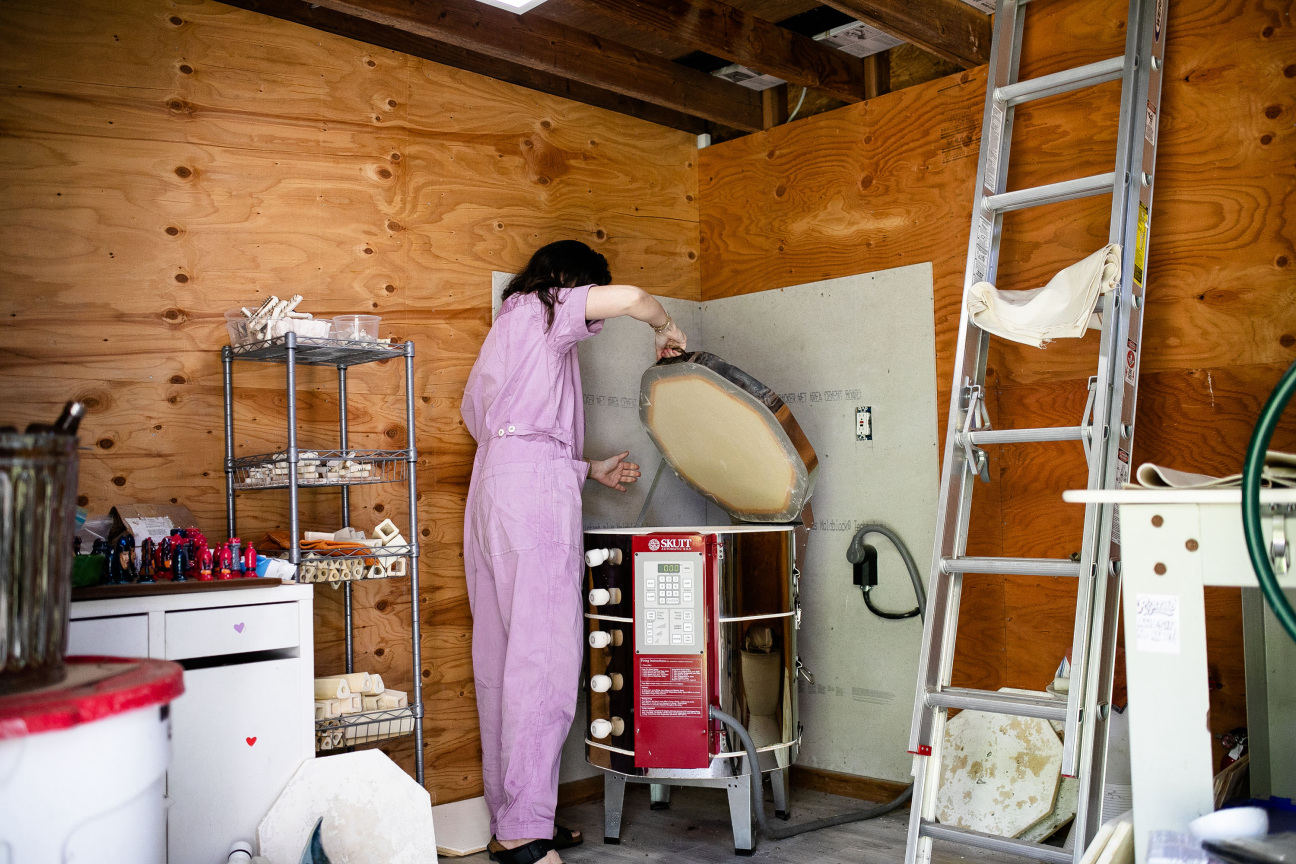
CULTURED: You’re in the upcoming “Syphilis Too (II)” show curated by Anton Kern and Adam Cohen at David Lewis. What are you exhibiting?
Sarah Aibel: I’m making a few new works specifically for the show. I’m going to make a direct, somewhat comedic reference to syphilis, because if it’s not funny, it’s just terribly depressing. And then I’m going to do something more esoteric, more about the breakdown of bodies, society, and culture. You know, just some small themes.
CULTURED: And Adam gave you your first solo show, right?
Aibel: Yes, “I Quit” at A Hug From the Art World.

CULTURED: Yes, those escape cases. Tell us more about them.
Aibel: I was thinking a lot about work: what it means to work, all the different forms it can take. What are the boundaries of work and life when you’re an artist and a mom with three young kids? And I started fantasizing about escape. What would I bring? What would I need? To just have a go bag ready and waiting for the moment I needed to tap out of my life … that’s how the briefcases began, as escape cases. And then they just morphed into this kind of tight framework in which I could tell a story.
CULTURED: In your process you allow the materials and alchemy to lead a bit.
Aibel: I love not holding on too tight to the outcome I want and kind of being able to be flexible and moving with whatever the clay brings. Obviously I have an idea of what I’m trying to achieve, but this is one of the few places in my life where I can relinquish control and just be with the process. You really leave it to the kiln gods.

CULTURED: Tell me about what clay has taught you.
Aibel: Working with clay has changed the entire way I view my life, honestly! Feldspar, the main material of clay, is the most abundant mineral group in the Earth’s crust. So in a lot of ways, it’s like clay is Earth, and it’s a metaphor for our time on Earth. You can coax clay and you can manipulate clay, but you can’t force clay. If the clay doesn’t want to do what I had it doing in my mind, then I have to switch gears, reimagine the concept or the technique or even the piece itself.
Sometimes I will sit down to make one thing and a completely different piece comes out of it. It’s a constant balance of being flexible but discerning, determined but unattached to the outcome. I feel so meditative in my studio, almost to the point of the works being a collaboration between the tension in the clay and the ideas in my mind.

CULTURED: And when did that ability to let go click for you?
Aibel: It was always somewhat “built in” to my understanding of the material, but it was when I started firing in my own kiln in my studio that I realized the whole process could be so much more expansive and intuitive. There are a lot of common sense rules for pottery that I was able to throw out the window. I didn’t have to worry about ruining someone else’s work if mine exploded. I was free to use whatever I wanted in whatever fashion I wanted to use it.
I can’t emphasize enough how much this changed my trajectory. I became able to push the medium in a way I’d never been able to before. My whole practice has become an exercise in letting go, both in the studio and in life. Letting go of preconceived notions, letting go of expectations, letting go of control. Throw out everything you think you know and just start inside yourself.










 in your life?
in your life?

